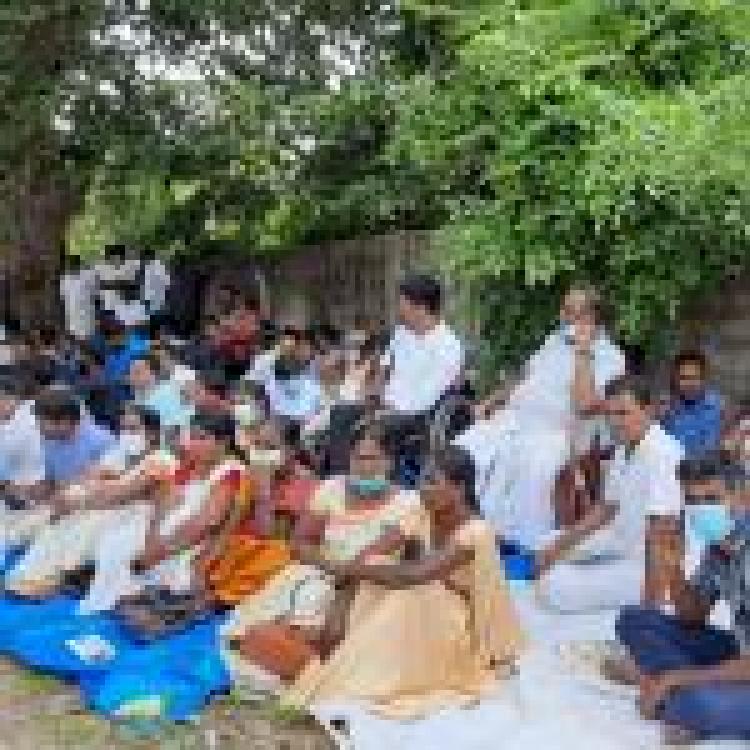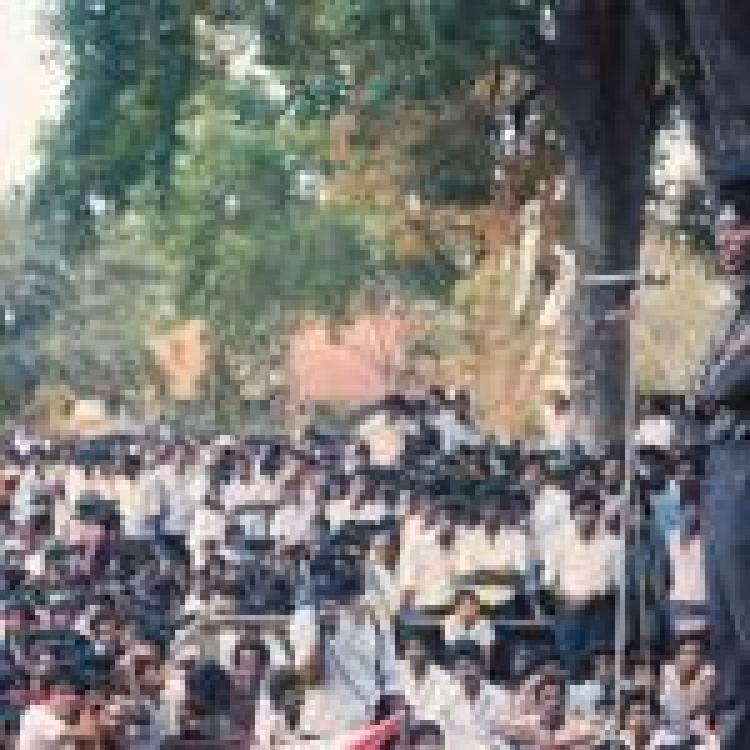We were at home mostly during that time, especially the girls. The Indian Army were present, so it was not safe to wander outside. In order to sabotage the hunger strike, the Indian Army would disperse the crowd gathered around him. There was a lot of talk in the community about rumours to stage a ‘kidnapping’ to ruin his hunger strike. The Indian Army were set on disrupting the non-violent campaign somehow.
We visited Thileepan once. It was on his ninth day into the strike, so he was already fairly frail by this time. His bed had been brought out from his tent and into public view as he deteriorated. He was less mobile, so having to come out from his shelter and onto the stage to publicly speak would have taken away more of his energy. He did not have much strength to speak to the crowd during the final days of his life. He was sleeping when we saw him. It was around 9pm. We deliberately went at a time when it would be quieter. The crowds were huge during the day. The Nallur road was wide, so it could accommodate a lot of people.
Even though it was quieter at night, he was still surrounded by people. Going to see Thileepan was like making a pilgrimage for the Tamil youth then. People came from all over. It was a way to encourage his spirit, but also to stand together and be with our people in solidarity and struggle.
After a while, they did not allow the public too close to the stage, to prevent any contamination. There was always a visiri, a person fanning him. Even though Nallur temple was so close, I do not remember any prayers for him. There were fears of what the Indian or Sri Lankan armies could do to the priests who supported the strike.
Thileepan was a rising star, studying medicine so I think the impact was more powerful. The thought of his unrealised potential sat heavily in the thoughts of the Tamil community. He sacrificed his education and even his own growth within the liberation movement to enter into a protest which he knew could kill him. It is heart-breaking to think he was only 23 and willing to make such a sacrifice.
He did not have a mother. His family around him knew that his condition was deteriorating rapidly as they were by him the entire time. Towards the end, regular updates from the doctor revealed to the family that he would not have long to live – so they knew. Watching him deteriorate must have been more excruciating.
After he passed, there was a strong motivation among the Tamil youths to join the LTTE. A lot of people did join, including some of my friends and family. I remember they said they had more fighters than weapons because people were joining so quickly. The youth were fuelled by the fact that Thileepan’s basic demands had not been met, and inspired by his noble sacrifice.
I don’t recall any other person who engaged in a hunger strike and stuck to it unto death. I don’t think any other person made such a huge impact on our nation or on the movement.
As told by Vathana, a Tamil woman from Valvettithurai who visited Thileepan during his hunger-strike while herself 23-years-old.


